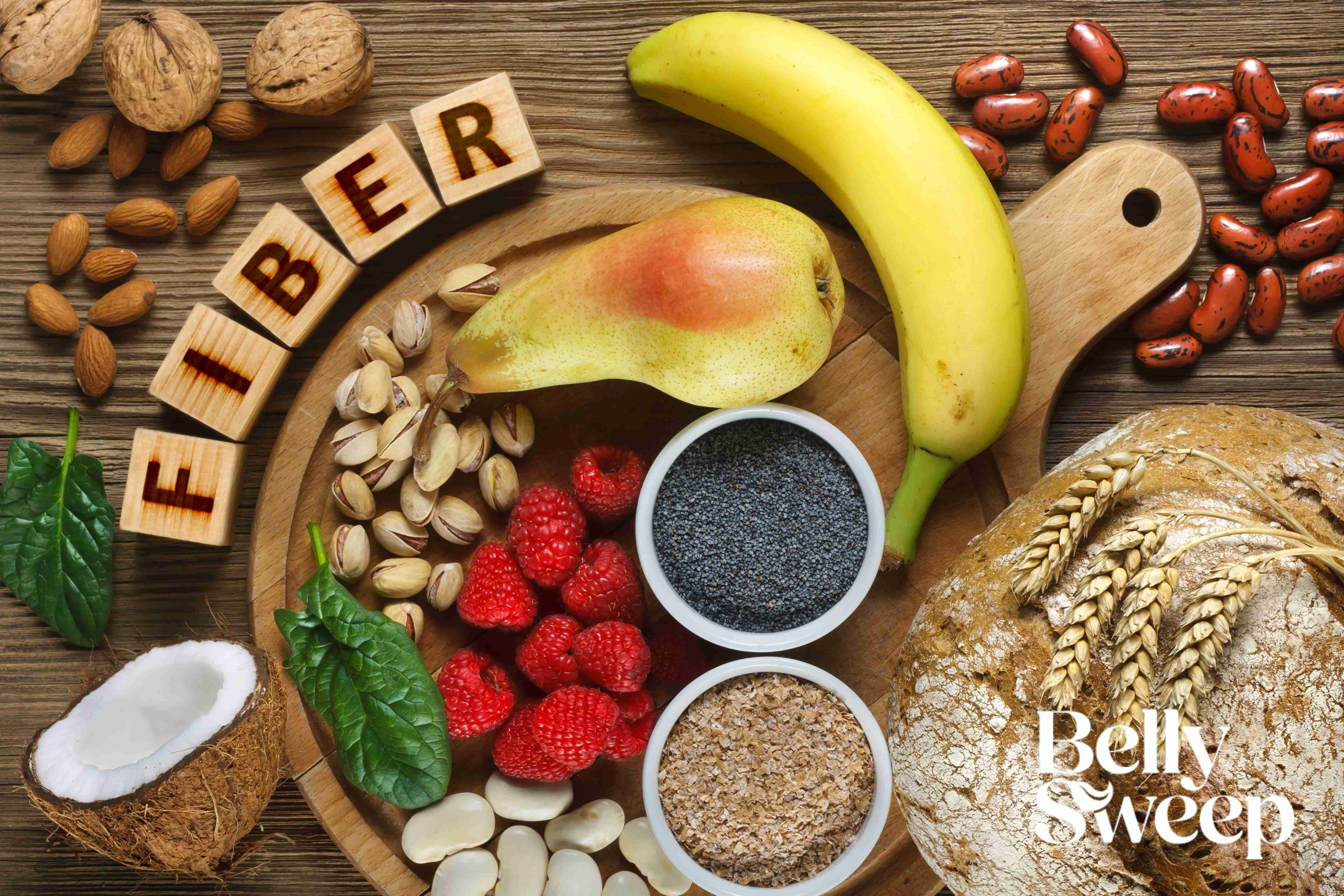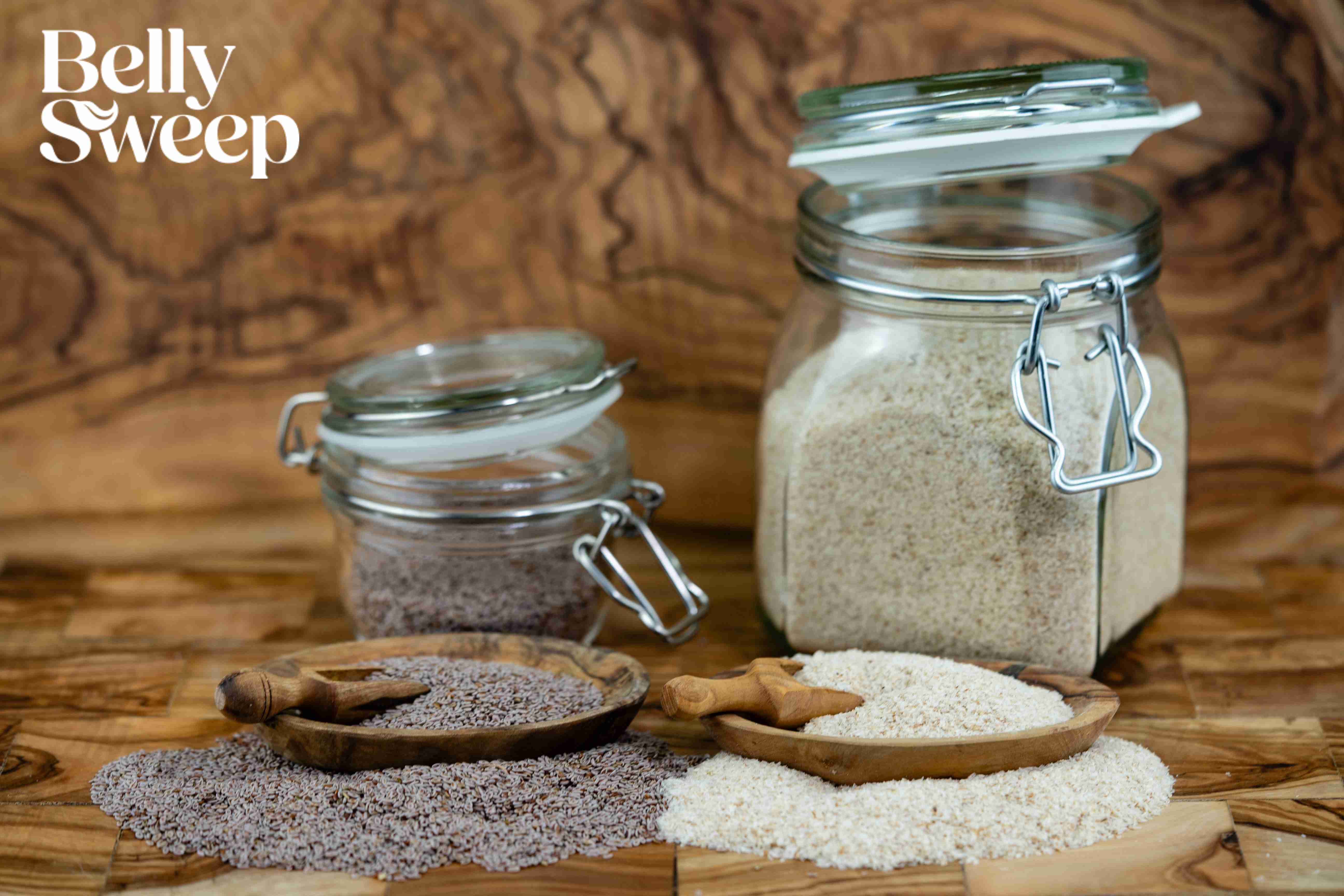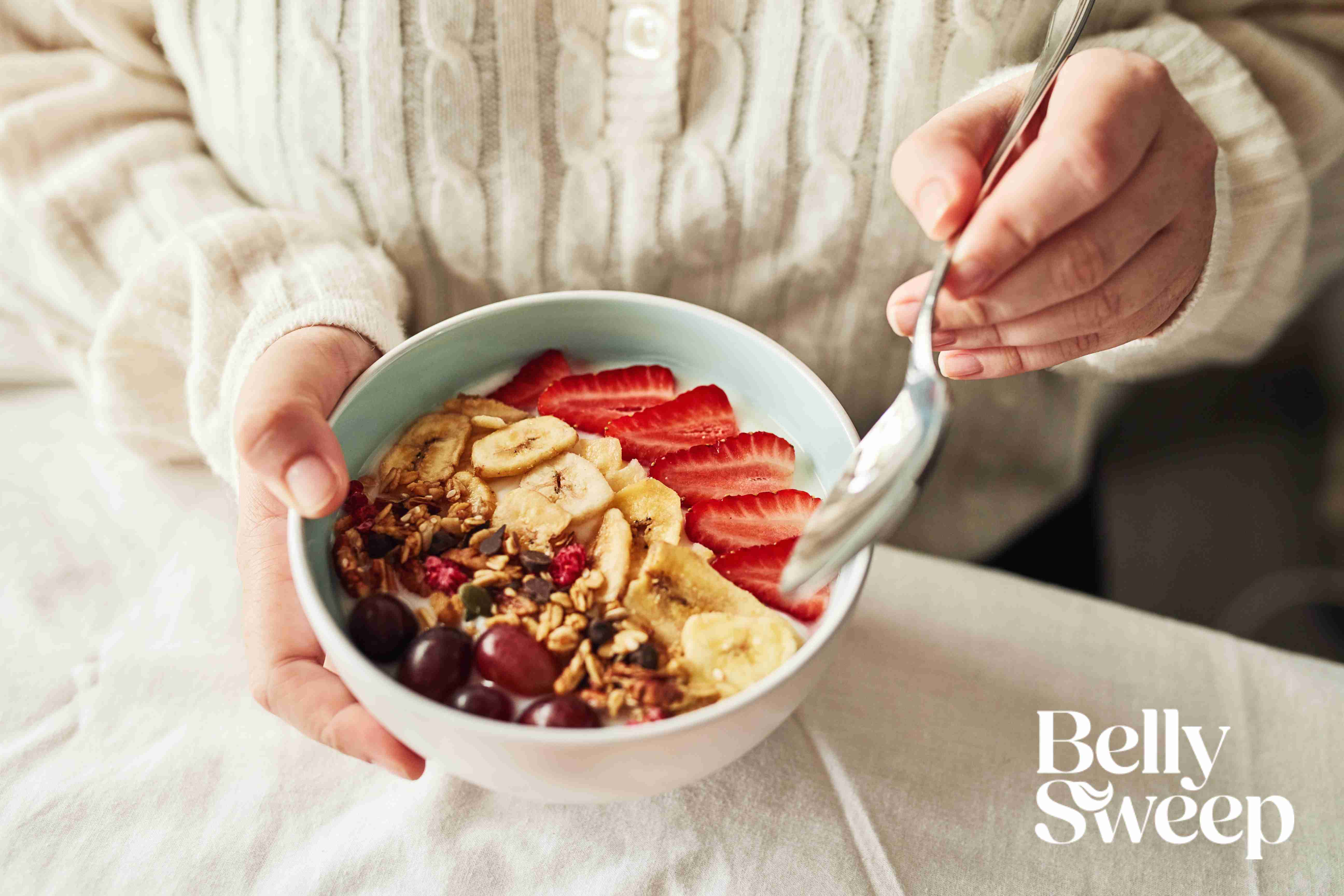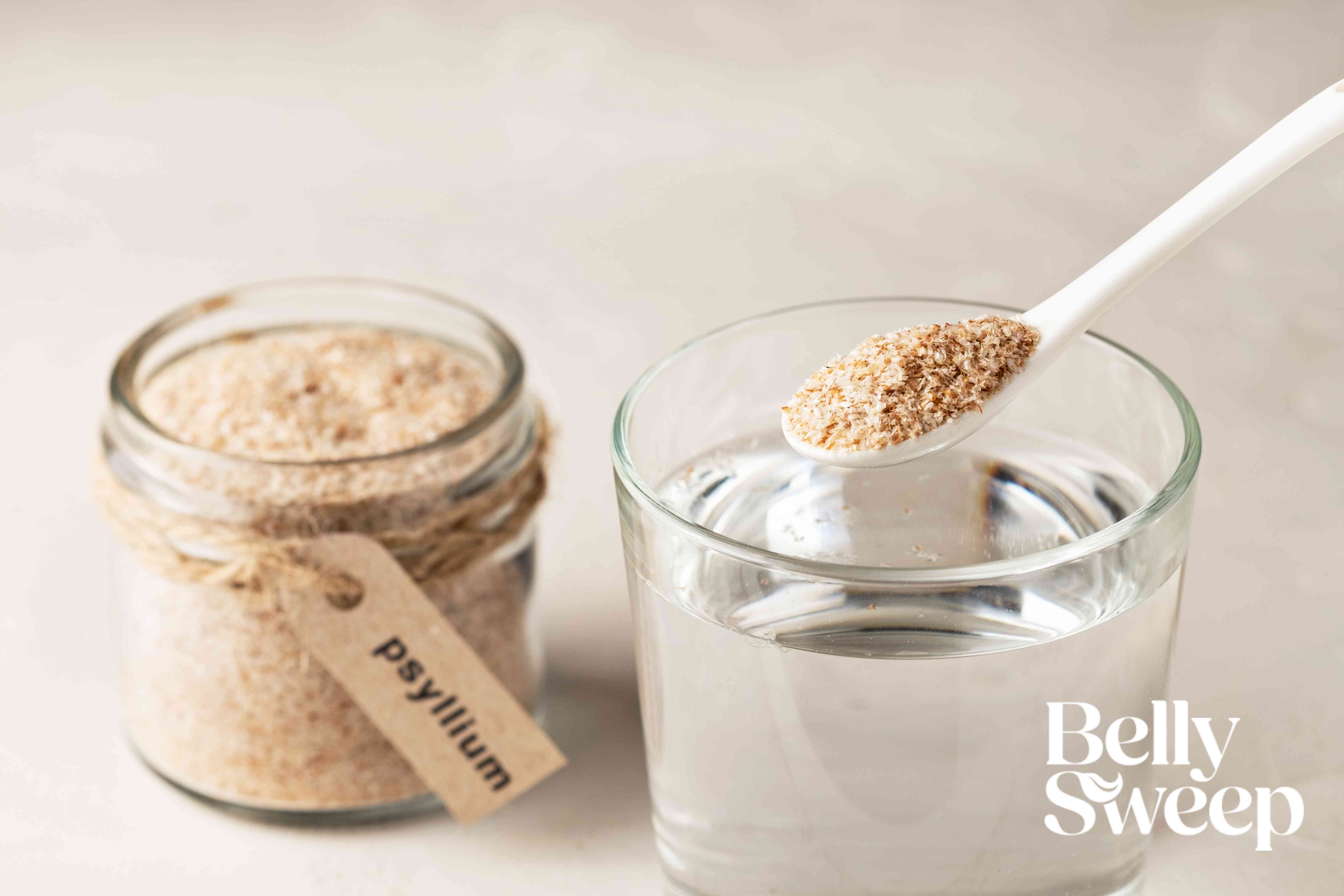The Top Benefits of Fiber for Your Health

Fiber isn’t just something to add to your diet when you want to fine-tune your health and well-being — it’s a foundational building block of a healthy life. While many of us know that fiber helps promote healthy digestion and can ease constipation, did you know that this is only the tip of the iceberg? In fact, regular fiber supplementation has been shown to promote healthy weight management by controlling cravings and to improve heart health by tackling harmful levels of cholesterol.
Without fiber, your body simply cannot achieve the state of balance that it needs to go from surviving to thriving.
Quick Answer: Why Is Fiber So Beneficial?
The benefits of fiber are so far-reaching and diverse that it is impossible to cover them in a single sentence. If you want to know about the most commonly known benefit, however, it has to be digestion.
While many will know that increasing your fiber intake can help ease painful bloating and constipation, did you know that it can do so much more? The right balance of natural fiber in the gut doesn’t just help you pass stool; and it actually helps the healthy gut flora that your body relies on by feeding them a nourishing diet. Not only does this help you break down food more easily, but it also ensures that you get optimal nutrient uptake from every mouthful.
Add in the fact that fiber makes you feel fuller for longer so that you don’t endlessly crave snacks and sweet treats, and you have a helping hand from the natural world that is too potent to ignore. Let’s take a closer look so that you can see what’s really going on here.
Understanding Dietary Fiber
Before we dive into the details of what fiber can do for your body, we need to first define what it is. Fiber is a naturally occurring material made up of building blocks such as pectin, cellulose, and lignin.
The key point here is that fiber is highly resistant to the digestive enzymes that break down food in the gut. You can think of it like a workout for the gut that actively promotes the growth of healthy gut bacteria. The more healthy the gut’s microbiome, the more nutritional benefits can be extracted from each bite of food.
A quick search online can lead to confusion, though, with many ‘experts’ discussing the benefits of the soluble vs. insoluble fiber debate. Rather than push you in a particular direction, we’re focused solely on conveying the bigger picture so that you can make an informed decision about what is best for your body.
You need both types of fiber if you are going to achieve the natural balance your body needs. Soluble fiber will lower your blood sugar so that you avoid those peaks and spikes of energy that feel like they are punctuating your day. Another added benefit is that soluble fiber can help feed the growth of the healthy gut bacteria we mentioned a little earlier.
Insoluble fiber is just as important to your overall health and wellness, although it serves a different purpose. The main role of insoluble fiber in the diet is to gradually soften your stool so that you find it easier to pass. This is key not just for avoiding and treating constipation but also to make sure your bowel movements are regular so that you can excrete harmful toxins.
Now that we understand what fiber is and its primary roles in the body, we can take a closer look at the specific health benefits it provides.
Health Benefits of Fiber
Increasing your fiber intake helps you unlock a whole host of health benefits that can stay with you for the rest of your life.
Digestive Health
A healthy gut extracts nutrients from your food, never gets constipated, and helps you regularly pass stool so that you can get rid of all those harmful toxins.
Heart Health
Reducing your level of harmful LDL cholesterol will reduce your blood pressure and allow your heart to work so much less during the day.
Blood Sugar Control
Fiber is a proven way to smooth out the spikes in blood sugar that can occur after eating a sugary snack or carb-heavy meal. One of the main benefits of fiber is that it makes you feel energized throughout the day.
Weight Management
Fiber fills up the gut and stops junk food from tricking you into eating more. The result is a more balanced approach to eating that allows you to naturally manage your weight without feeling like you’re going hungry or having to skip meals.
Holistic Health
We cannot stress enough that optimal fiber intake is good for every aspect of your health, not just those key areas we have highlighted above. When your body has everything it needs to thrive, you will notice the difference in a whole host of new and exciting ways.
Now it’s time to take a look at the best places to find the fiber your body needs.
Best Sources of Fiber
Take a look at this delicious selection of food types and then try and integrate each of them into your diet at least 3-4 times a week. By keeping things varied, you will give yourself the best possible chance of sticking to the changes you’re trying to make.
Whole grains
Something as simple as changing the bread or wraps that you use to make your lunch can transform the way you put fiber into your body.
Fruits
Juicy berries taste great, have plenty of natural fiber, and make ideal snacks that you can pick at throughout the day.
Vegetables
Fibrous veggies are a great way of bulking out your evening meal as you look to move away from carb-heavy dishes that can leave you feeling lethargic.
Legumes
With over 16,000 different varieties of legumes and beans, there is plenty to try when you want to get experimental with your evening meals.
Nuts
Nuts aren’t just rich sources of fiber, they also come with plenty of fatty acids that promote improved brain health.
Seeds
Sprinkling a few spoonfuls of seeds on your morning porridge or lunchtime salads will help you strike the perfect balance.
Once you know what to eat, all you have to do is figure out how quickly you can make the changes.
Tips for Increasing Fiber Intake
The benefits of fiber will be most easily accessed when you increase the amount of fiber in your diet the right way. While it may be tempting to see dietary fiber as some form of digestive magic bullet that solves everything overnight, it’s important to stress that the body is much more complicated than that. Following these three key steps will help you achieve the right balance.
Make gradual changes
If you want to avoid bloating and gas, you will need to be patient and give your body time to adapt. Shocking the body will place it under stress and throw off the balance of your gut’s microbiome, resulting in gas and bloating. Building up to your target fiber intake over the course of 2-3 weeks will give your body ample time to adapt.
Work on your water intake
Fiber works its magic in the gut by drawing in more water and breaking things down. The problem here is that many of us forget to increase our water intake, assuming that fiber alone will take care of everything. If you experience discomfort or constipation when increasing your fiber intake, this is a sure sign that you need to increase your water intake.
Be creative at mealtimes
Sticking to an overly restrictive diet is just going to make you stressed and ensure that you feel like you’re missing out. By varying your sources of fiber — juicy berries one day, crunchy nuts and seeds the next — you can make sure that you stay motivated and committed to the changes you’re making.
Potential Risks and Considerations
When taking any supplement for the first time or making changes to your diet, there will always be a degree of risk involved. While the risks of taking fiber are minimal, it wouldn’t be right if we simply ignored them. After all, this guide is all about giving you everything you need to make an informed decision in the best interests of your long-term health and well-being. Take a moment to make yourself aware of the following.
Digestive discomfort
Taking too much fiber can shock the gut and result in painful bloating and gas. Although this can be alleviated by reducing your fiber intake, it is important to note that the exact dosage of fiber required will vary from one person to the next. Learning to listen to the signs and signals your body gives off will help you figure out the optimal dose.
Medication interactions
There is always a small possibility that a new supplement may interact with your medication. In the case of taking a fiber supplement, this is particularly true of medication that is taken orally. The best approach in this case is to wait 60-90 minutes after taking your medication before taking your new fiber supplement.
Medical conditions
Conditions such as IBS and diverticulitis can complicate matters concerning the gut. While optimal fiber intake has been shown to help sufferers manage both of these conditions, it’s important to move slowly and only make small changes from one week to the next. Giving the body additional time to adapt to the changes you are trying to drive will minimize the chances of your gut condition flaring up.
FAQs
Does fiber help lower cholesterol or regulate blood sugar?
Yes, fiber can help with both of these issues. Fiber will lower cholesterol by reducing the amount of harmful cholesterol the body can absorb during the digestion process. Fiber will help regulate blood sugar by slowing the rate at which sugar is absorbed, helping to smooth out the spikes and crashes in energy that can occur after eating.
Are there risks associated with getting too much fiber?
While fiber is a perfectly natural, healthy substance to put into your body, it is always possible to have too much of a good thing. Excessive fiber intake can cause mild wind and bloating that will be quickly alleviated by reducing the amount of fiber you consume. In other cases where not enough water is put into the body, too much fiber can also cause constipation.
What are the best natural sources of fiber?
Berries, nuts, and seeds all offer high levels of dietary fiber and can be easily integrated into a healthy, balanced diet. Many people also supplement their fiber intake with psyllium husk, allowing them to increase the amount of fiber in their diet without radically increasing the volume of food they need to eat.
Is it better to get fiber from supplements or whole foods?
The best approach is to do what works for your body. If you are able to eat enough food and continually vary the types of food you eat to meet your fiber goal, great! For those who want to optimize their diets without feeling like they have to constantly eat throughout the day, supplementing with psyllium husk is also worth a closer look.
How does fiber aid in digestion and regular bowel movements?
Fiber provides a natural workout for the healthy gut bacteria that break down food and allow you to extract nutritional goodness from every bite you eat. The right level of fiber will also soften and bind your stool, making it easier for you to pass so that you can excrete toxins from your body.
Final Thoughts
Once you take a closer look at the science, as we have done in this guide, the benefits of fiber really do speak for themselves. Better digestion, greater nutrient uptake, and improved heart health each help you tick plenty of boxes. If you then add in the fact that dietary fiber makes you feel fuller for longer so that you can manage your weight without having to battle cravings, you have everything covered.
If you would like to learn more about how to give your body everything it needs, exploring the benefits of a supplement such as BellySweep is highly recommended.
Once you have everything you need, you really will start to thrive!
RESOURCES
Slavin, J. L. (2008). “Dietary fiber and body weight.” Nutrition, 24(4), 353-358.
https://doi.org/10.1016/j.nut.2007.12.006
Soliman, G. A. (2019). “Dietary fiber, atherosclerosis, and cardiovascular disease.” Nutrients, 11(5), 1155.
https://doi.org/10.3390/nu11051155
Anderson, J. W., Baird, P., Davis, R. H., Ferreri, S., Knudtson, M., Koraym, A., Waters, V., & Williams, C. L. (2009). “Health benefits of dietary fiber.” Nutrition Reviews, 67(4), 188-205.
https://doi.org/10.1111/j.1753-4887.2009.00189.x
Reynolds, A., Mann, J., Cummings, J., Winter, N., Mete, E., & Te Morenga, L. (2019). “Carbohydrate quality and human health: a series of systematic reviews and meta-analyses.” The Lancet, 393(10170), 434-445.
https://doi.org/10.1016/S0140-6736(18)31809-9
Vuksan, V., Jenkins, D. J. A., Spadafora, P., Sievenpiper, J. L., Owen, R., Vidgen, E., & Brighenti, F. (1999). “Konjac-Mannan and Psyllium: Emerging Alternative Viscous Fibers for Lowering Cholesterol and Controlling Diabetes.” Current Opinion in Lipidology, 10(6), 563-571.
https://doi.org/10.1097/00041433-199912000-00003
Eswaran, S., Muir, J., & Chey, W. D. (2013). “Fiber and functional gastrointestinal disorders.” American Journal of Gastroenterology, 108(5), 718-727.
https://doi.org/10.1038/ajg.2013.63
Lattimer, J. M., & Haub, M. D. (2010). “Effects of dietary fiber and its components on metabolic health.” Nutrients, 2(12), 1266-1289.
https://doi.org/10.3390/nu2121266
McRorie, J. W., & Chey, W. D. (2016). “Fermented vs. non-fermented fiber: Implications for gut health and the treatment of constipation.” Alimentary Pharmacology & Therapeutics, 43(8), 899-915.
https://doi.org/10.1111/apt.13543
Maki, K. C., Carson, M. L., Miller, M. P., Turowski, M., Bell, M., Wilder, D. M., Rains, T. M., & Reeves, M. S. (2008). “High-molecular-weight hydroxypropylmethylcellulose blunts postprandial glycemia in individuals with type 2 diabetes mellitus.” Journal of Nutrition, 138(1), 139-143.
https://doi.org/10.1093/jn/138.1.139
Marlett, J. A., McBurney, M. I., & Slavin, J. L. (2002). “Position of the American Dietetic Association: Health implications of dietary fiber.” Journal of the American Dietetic Association, 102(7), 993-1000.
https://doi.org/10.1016/S0002-8223(02)90228-2








